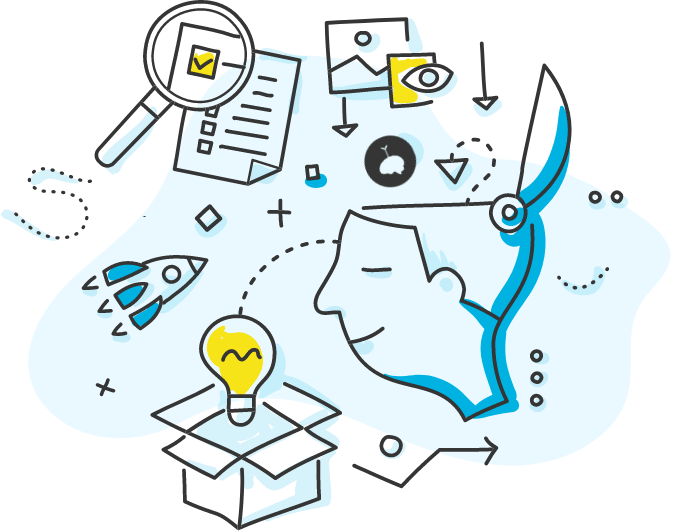
Over the past several months, I’ve been doing a deep dive into the latest research surrounding creativity. I find creativity fascinating, namely because it allows us to become more productive—creativity lets us solve problems better, and work smarter in general. For people who do knowledge-based work for a living, productivity and creativity are inseparable.
As I’ve pored through the research, I’ve adopted several creativity habits that let me approach my work differently—all backed by a wealth of research.
Here are 10 simple habits you can use to become more creative every day.
- Consume more valuable dots. I view creativity as the process of connecting dots. A “dot” is an idea, or a piece of information. On a neurological level, our brain is a vast constellation of these dots. We consume dots whenever we encounter and process new knowledge, experiences, conversations, or perspectives on the world. When absorbing information that’s useful, practical, and relevant to our work and lives, we can connect that information and act upon it later. The more valuable the information we consume, the more valuable the connections we make.
- Perform an information detox. Take stock of the information you consume over a given week—whether on autopilot mode or by choice. This includes the apps you fire up automatically, the websites you visit out of habit, the books you read in your spare time, and the shows you watch on TV and Netflix. After taking stock of what you consume over a given week, set a few simple intentions to increase the quality of those dots.
- Daydream. Daydreaming supercharges the dot-connecting power of your brain—this is why so many brilliant ideas come to you in the shower or when you’re taking a walk, while hardly any inspiration comes from using your smartphone. Setting aside time each week to do absolutely nothing will make you more creative.
- Do something habitual—but don’t overload your attention. Curiously, research suggests our brain connects the most dots when we’re doing something habitual that doesn’t consume our complete attention—like spending time on a creative hobby, folding the laundry, or taking a shower. By doing habitual tasks, we give our mind the space it needs to form more connections.
- Do your most creative work in a messy room. Our environment can greatly influence our mood and behavior, and research shows we’re more creative in a messy environment. (Keep in mind, though, that more physical order leads to greater productivity and focus.)
- Wait as long as possible before solving problems. Purposefully putting off solving a problem isn’t always counter-productive, especially when it comes to problems that require creative solutions. Taking time allows your mind to mull over the problem, connect dots, and come up with a novel—and more creative—solution.
- Do creative work when you’re most tired. You’re the most productive when you have the most energy—but research suggests you’re the most creative when you have the least amount of energy. Your brain is least inhibited during these hours, and has less energy to regulate its thoughts. Figure out when you have the least energy, and schedule creative brainstorming during that time.
- Don’t consume caffeine before creative tasks. While caffeine makes you more focused (it narrows your attention spotlight onto a specific task), this can be detrimental to your creativity, which results from your brain connecting more disparate dots. Save caffeine for your productive tasks—not your creative ones.
- Sleep on a problem. The research I’ve encountered suggests that sleeping on a problem actually works, because your brain continues to form and solidify new connections as you rest. Sleeping on it allows your brain more time and space to connect the dots presented by learning a new skill or solving a creative problem.
- Intentionally scatter your attention. To do this, hold a topic loosely in mind. Let your thoughts wander around it, turn it over, and explore it from different angles. When your mind trails off to think about a totally unrelated topic, or gets stuck on one point, gently nudge your attention back to flowing more freely. This tactic allows you to solve complicated problems more creatively.
If you’re looking to become more creative, these 10 simple habits will help!




